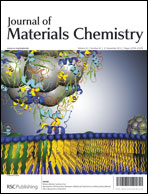Second generation gold nanobeacons for robust K-edge imaging with multi-energy CT†
Abstract
Spectral CT is the newest advancement in CT imaging technology, which enhances traditional CT images with it’s the capability to image and quantify certain elements based on their distinctive K-edge energies. The K-edge imaging feature recognizes high accumulations of targeted elements and presents them as colorized voxels against the normal grayscale X-ray background offering promise to overcome the relatively low inherent contrast within soft tissue and distinguish the high attenuation of calcium from contrast enhanced targets. Towards this aim, second generation gold nanobeacons (GNB2), which incorporate at least five times more metal than the previous generation, were developed. The particles were synthesized as


 Please wait while we load your content...
Please wait while we load your content...